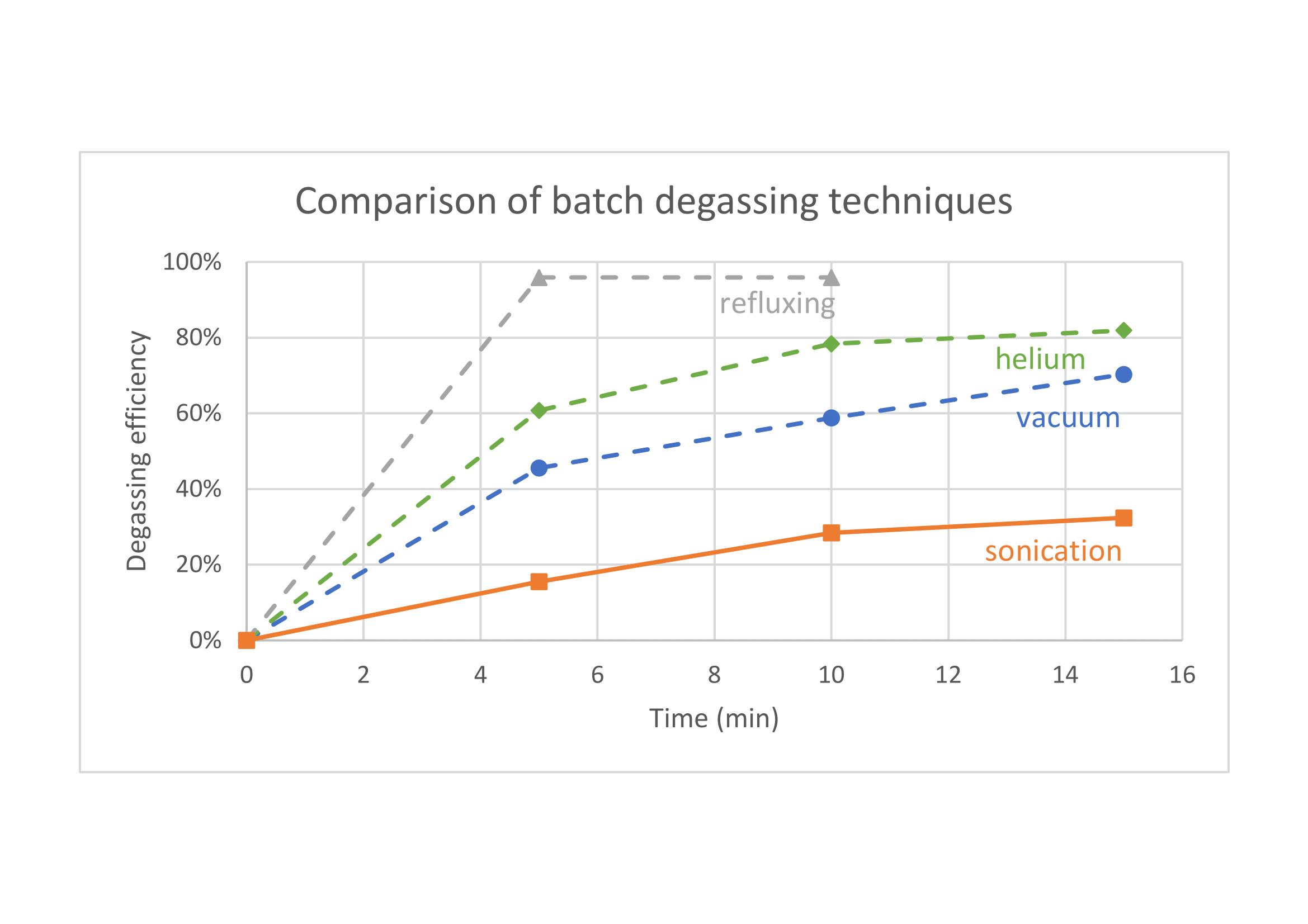What is the most efficient batch degassing?
The understanding how dissolved gases in HPLC and liquid chromatography can result in problems during detection and pumping is by no means new knowledge. Already 40 years ago, investigations were conducted about this issue while comparing means of solving it using the batch degassing methods available at the time.
It was manifested that bubbling eluents with a gas such as helium, having lower solubility in the mobile phase mixtures compared to the oxygen and nitrogen gases present, was a reasonably efficient way of removing dissolved gases. Almost as powerful was exposing the eluent to an external vacuum, although none of these methods could compare to the most efficient, but highly impractical arrangement of continuously refluxing the solvents. In contrast, especially considering todays rather widespread practice of ultrasonication, was that this approach was remarkably poor at removing dissolved gases from solvents.
“Ultrasonic degassing was
particularly disappointing”
The authors in one scientific paper even explicitly stated that “Ultrasonic degassing was particularly disappointing” after observing that this method only managed to remove one third of the dissolved gases. The citation above and the data on dissolved oxygen gas in methanol plotted in the figure below, were extracted from the scientific paper “Solvent degassing and other factors affecting liquid chromatographic detector stability” by Janet N. Brown et al., published in Journal of Chromatography 204 (1981) 115-122.
Contact Biotech Fluidics to learn how today’s efficient and convenient inline degassers can replace the outdated and ineffective practise of ultrasonication, thus eliminating the source of bubble formation in buffers and mobile phases utilised in HPLC and liquid chromatography.



